Which Evil Dictator Killed The Most People?
We have all hears the word “genocide”, and most people would define it as “killing”. Correct definition would be “the deliberate killing of a large group of people, especially those of a particular ethnic group or nation.” Did you know the word “genocide” was coined in 1943 to describe when the Armenians were slaughtered haphazardly by Turkish leader Ismail Enver? Until then there was no specific word for it in our language.
Some people make ghastly decisions, others are just bad presidents, a few are bloodthirsty, many are extremists, a couple are warmongers, and all of the following guys are a mix. Ten of our political leaders in the last 130 years have been the architects of the most horrific genocides, systematic murders, blockades, brutal wars, and policy reforms history has ever recorded.
We have become more aware in this last century to these events. Keep reading. Just sit back, because the countdown is about to begin… I don’t guarantee about relaxation.
- Yakubu Gowon (1.1 million deaths)
Breakdown: 1 million civilians on the wrong side of a blockade caused by a war of retreat in Nigeria and 100,000 soldiers who died in that war.
‘Déjà entendu’ It starts just as many other sad stories do, with precious beautiful oil. It had been found in the Niger delta where tensions were already high between the Eastern region (led by Ojukwu) and the rest of the country (governed by Yakubu). They have signed an agreement “Aburi Accord” that was of no significance for both leaders. Yakubu started to put pressure on the region, and tested how much sway he had in the area versus Ojukwu. Well Ojukwu being no slouch declared secession from the rest of Nigeria and became the “Republic of Biafra”. This began a war that caused the deaths of 100,000 soldiers, and much worse, a blockade on the region which starved 1 million civilians.
- Mengistu Haile Mariam (400,000 – 1.5 million deaths)
Breakdown: As president of Ethiopia and colonel of “the Derg” (communist militia) Mengitsu systematically killed those against him in the “Red Terror” campaign.
Mengistu Haile Mariam is a politician who presided over Ethiopia in the period between 1974 and 1991. The way he got into power was by smothering the previous president Haile Selassie although he has denied those rumors. Former dictator, Mengistu Haile Mariam, killed thousands of political opponents and ignored a famine which killed one million people.
Mengistu came to power in 1974 after his Derg party overthrew Emperor Haile Selassie. He soon instigated a purge of political opponents known as the “Red Terror”. Suspects were rounded up, some shot, others garrotted. The bodies were thrown on the streets. His biggest claim to fame is the Ethiopian Red Terror which was a campaign of repression led by the Derg (communist militia in Ethiopia).
In his introductory speech Mengitsu yelled, “Death to counterrevolutionaries! Death to the EPRP!” Then he took three bottles filled with blood and threw them to the ground.
It was an auspicious beginning to say the least. Thousands were killed and found dead on the streets in the years that followed. Much of the murdering can be attributed to the friendly neighborhood watch there known as “Kebeles”. As if killing innocents wasn’t enough they would then charge the family a tax to return the dead body to them. The tax was aptly named “the wasted bullet”! Are you serious Mengitsu? However there was an even more gruesome fate of being left on the street where wild hyenas would fight over the dead. The campaign has been described as one of the worst mass murders ever in Africa.
- Kim Il Sung (1.6 million deaths)
Breakdown: Unpopular among his people Kim used the U.S. as a scapegoat and forced the country to believe in his delusion or else.
He was descendent of his murderous father Kim Il Sung who led North Korea in a terrible direction. He fought for a command economy that allowed the government to make all decisions for the country. People never seemed to like him for various reasons, and so his hold on power was tenuous at best. Of course, he blamed somebody else, in this case the USA, and said they had spread disease throughout its population. He also pulled a Stalin, and had large-scale purges. His principal reason was that it would scare people into believing he was telling the truth. Kim’s purge was a little different than Stalin’s though in that there were no trials. During his tenure prison camps sprung up all over the country to contain the ever growing masses of people against Kim Il Sung.
- Pol Pot (1.7 million deaths)
Breakdown: Forced city residents to relocate to farms and forced them into hard labor.
By April 1975, a Communist group known as the Khmer Rouge, led by Pol Pot, seized control of Cambodia, renaming the country Democratic Kampuchea. Civil war had existed in Cambodia since 1970. Between 1970 and 1973, during the Vietnam War, the United States bombed much of the countryside of Cambodia and manipulated Cambodian politics to support the rise of pro-West Lon Nol as the leader of Cambodia. The Khmer Rouge used the United States’ actions to recruit followers and as an excuse for the brutal policies they exercised when in power.
Pol Pot was the leader of the communist movement in Cambodia. His attempt was to “clean” the country and it resulted in the death of an estimated 1.7 to 2.5 million people. There was an interesting policy going around called agrarian collectivization which he put into practice in the late 1970’s. Basically it forced city residents to head out to the farms to do some labor and vice versa for farmers. As you might guess, neither group was good at their new jobs. It didn’t stop Pol to enslave his own people though. He also didn’t feed them well, gave them little medical care, and executed many of them. The net result was killing off approximately 1/5 of the Cambodian population!
- Ismail Enver Pasha (2.5 million deaths)
Breakdown: 1,200,000 Armenians (1915) + 350,000 Greek Pontians and 480,000 Anatolian Greeks (1916-22) + 500,000 Assyrians (1915-20)
Ismail Enver Pasha was an Ottoman military officer and a leader of the 1908 Young Turk Revolution. He became the main leader of the Ottoman Empire in both the Balkan Wars and in World War I. He was known by increasingly elevated titles as he rose through military ranks, including Enver Efendi, Enver Bey, and finally Enver Pasha, “pasha” being the honorary title Ottoman military officers gained on promotion to the rank of Mirliva (major general).
After the Ottoman coup d’état of January 1913, Enver Pasha became the Minister of War of the Ottoman Empire and as one he was the most powerful figure of the government of the Ottoman Empire. He decided to involve the Empire in World War I on the side of Germany. Along with Talaat and Djemal, he was one of the principal perpetrators of the Armenian Genocide and thus is held responsible for the death of between 800,000 and 1,800,000 Armenians.
Prior to World War I, he was hailed at home as “the hero of the revolution”, and Europeans often spoke of Ottoman Turkey as “Enverland”. He strongly propagated Pan-Turkism, which is often considered as one of the reasons for the Armenian Genocide.
Etymology from Wikipedia:
Coined in 1943 by Raphael Lemkin (1900–1959), a Polish–Jewish legal scholar, to describe what the Turkish government (ca 1915–18) perpetrated against the Armenian people, now called the Armenian Genocide. From the stem of Ancient Greek (génos), “race, kind” or Latin “tribe, clan” (-cide).
- Hideki Tojo (5 million deaths)
Breakdown: Waged unprovoked wars against China, USA, Netherlands, and France.
Hideki Tojo was a general in the Imperial Japanese Army who assumed the position of Prime Minister and held Army Minister concurrently. As also held other major positions such as Home Minister, Foreign Minister, Education Minister, and Commerce Minister. His major contributions to education were teaching militaristic and nationalist indoctrination. His version of homeland security was approving eugenics measures which essentially made a distinction between pure blood and mixed blood Japanese families.
During World War II, Tojo started winning battles and the public loved him for it. He really bought into the Nazi Kool-aid, and held steadfastly with Germany. When the tide turned, and he began losing, it was devastating. Eventually he went into seclusion. He was tried for war crimes and found guilty of waging wars of aggression, wars in violation of international law, and waging unprovoked war against many countries. Not to mention ordering, authorizing, and permitting inhumane treatment of Prisoners of War.
- Leopold II of Belgium (2-15 million deaths)
Breakdown: Created a colony called the “Congo Free State”, enslaved its people, and forced them into labor plants.
Leopold II, who was the King of the Belgians, believed in colonialism. He thought acquiring colonies overseas was essential to a great country and was always scheming. The problem was Belgium really didn’t care, and so Leopold went into business for himself. He started a company that seemed like it was doing good called the International African Society. A year later he used that company to travel to Congo, laid claim to a plot of land 14 times the size of Belgium, and made 14 countries agree (USA included) that he was free to rule it with his own private militia. He then forced the indigenous populations into forced labor, created a bustling rubber industry, and abused his workers grievously.
Missionary John Harris on returning from Congo said:
“I have just returned from a journey inland to the village of Insongo Mboyo. The abject misery and utter abandon is positively indescribable.”
Estimates of the death toll range from two to fifteen million which could all have been avoided if 14 countries didn’t hand him the keys to the car!
- Adolf Hitler (17 million deaths)
Breakdown: Concentration camps and civilians in WWII.
Adolf Hitler was the leader of the Nazi Party. He was the absolute dictator of Germany from 1934 to 1945. He gained support by promoting values like German nationalism and anti-semitism. Hitler was appointed chancellor in 1933 and began the Third Reich. Hitler was power hungry as all hell, hated the shit out of Jews (and others), and wanted hegemony in Europe. The militarization that was needed to complete such a lofty goal led to the outbreak of World War II. Nazi forces engaged in the systematic murder of as many as 17 million civilians, an estimated six million of whom were Jews, and 1.5 million Romanis.
The Holocaust, also referred to as the Shoah, was a genocide during World War II in which Adolf Hitler’s Nazi Germany, aided by its collaborators, systematically murdered some six million European Jews, around two-thirds of the Jewish community in Europe. A broader definition of the Holocaust includes the murder of the Roma and the “incurably sick”. A broader definition includes ethnic Poles, other Slavic groups, Soviet citizens and prisoners of war, homosexuals, Jehovah’s Witnesses, black people, and political opponents.
Persecution was implemented in stages. In 1933 the Nazis built a network of concentration camps in Germany for political opponents and “undesirable” people. After the invasion of Poland in 1939, the regime set up ghettos to segregate Jews. Over 42,000 camps, ghettos, and other detention sites were established.
- Jozef Stalin (23 million deaths)
Breakdown: The great purges and Ukraine’s famine.
Jozef Stalin was the first Secretary of the Communist Party in the period from 1922 to 1953. After Lenin’s death in 1924, he became leader of the Soviet Union. Stalin didn’t take long in launching a new economy that screwed up food production across the country so bad it caused massive famine. Between 1922-23 it reached catastrophic proportions. In Ukraine this dark period is known as Holodomor. Its widely believed that Soviet policies caused the famine there and was designed as an attack on Ukrainian nationalism. Estimates on the total number of casualties within Soviet Ukraine range from 2.6 million to 10 million! During the late 1930s Stalin launched another wonderfully titled initiative called the Great Purge (also known as the “Great Terror”). It was a paranoid campaign to kill off the people who opposed him, and his targets were often executed.
In 1939 Stalin agreed to a non-aggression pact with the Nazis. Eventually Germany violated the pact, the Soviet Union joined the allies, and they racked up 23.9 million deaths (the largest death toll in the war).
- Mao Zedong (49-78 million deaths)
Breakdown: Policy reforms like the Great Leap Forward and the Cultural Revolution.
Mao was a Chinese communist leader and founder of the People’s Republic of China. He was responsible for the disastrous policies of the ‘Great Leap Forward’ and the ‘Cultural Revolution’. Although controversial, Mao is still widely considered a savior of the nation. During his first five years from 1949 – 53 he is said to have systematically killed between 4 to 6 million people by sentencing them to die or by sending them to “reform through labor” camps. He organized mass repressions, established execution quotas, and defended his actions in these early years as necessary for securing power for “The People’s Republic of China”.
His social programs the Great Leap Forward and the Cultural Revolution are two of the most ill-fated, poorly named, initiatives ever. The first was an effort to rapidly industrialize China. He focused on making China a premier exporter of steel, and to this end he asked everybody to make it. The problem was it got many citizens to make smelting shops in their backyards. Not only was the steel of little value, but it was made from everything lying around the house including their own cooking supplies! Without the tools to make food, no money coming in from the steel, and no money to survive ~ a lot of people starved to death. The estimates on this program alone are 20 million deaths! Doesn’t it make you wonder… why would you EVER let someone back into power after such an insanely bad decision? As the matter of fact, he was taken the reign away for a while.
The Socialist Education Movement was a movement launched by Mao Zedong in 1963 in the People’s Republic of China. Mao sought to remove what he believed to be “reactionary” elements within the bureaucracy of the Communist Party of China, saying that “governance is also a process of socialist education.” The main goal of the movement was to cleanse politics, economy, organization, and ideology (the four cleanups) and by 1964 this movement was renamed the “four cleanups movement”. It was to last until 1966.
This led to the formation of the “Red Guards” who were organized to punish intellectuals and take out Mao’s political adversaries. The Cultural Revolution was now underway, and its overriding mission was to abolish: Old Customs, Old Culture, Old Habits, and Old Ideas. Something Mao passionately believed in was that destruction and chaos could bring re-birth. So he told his followers to destroy buildings, sacred objects, talk back to ones elders, punish them, turn them in, and kill those who did not agree. By 1968 things were starting to look pretty good for Mao all over again, and so he put into place the decade long “Down to the Countryside Movement” which forced young intellectuals to move out to the country to become farmers. What this movement entailed was that intellectuals were sent to the countryside to be re-educated by peasants. They still attended school, but also worked in factories and with peasants. The campaign is described as a “nearly complete failure.”
Sadly, the people he pushed out there were the same Red Guards who had helped him get power. Estimates of the death toll are between 40,000 – 7 million depending on who you ask.
Finally, there is the 100 flowers movement which just needs an abbreviated mention here. Mao asked people to come forth and tell him how he should govern China. Intellectuals and liberals bit at the chance to tell him what they really thought, and were encouraged by the Communist party to do so. Then in a sudden change of heart, or an incredibly crafty mission to out his haters, the government persecuted 500,000 of them who were considered to be “dangerous thinkers”.
His policies and political purges from 1949 to 1976 caused the deaths of 49 to 78 million people.





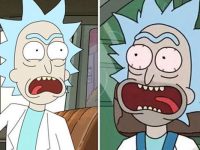








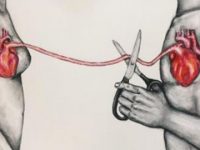



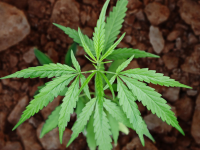



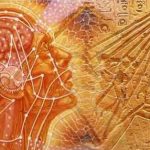





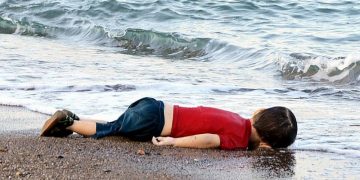



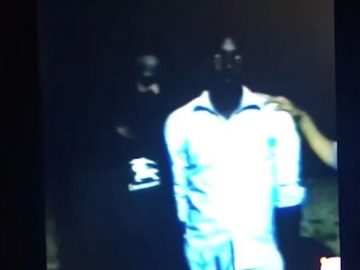
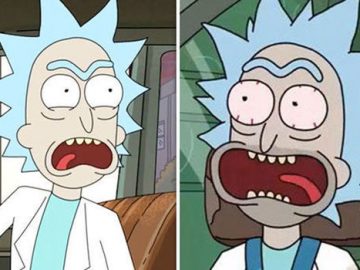


Connect with us